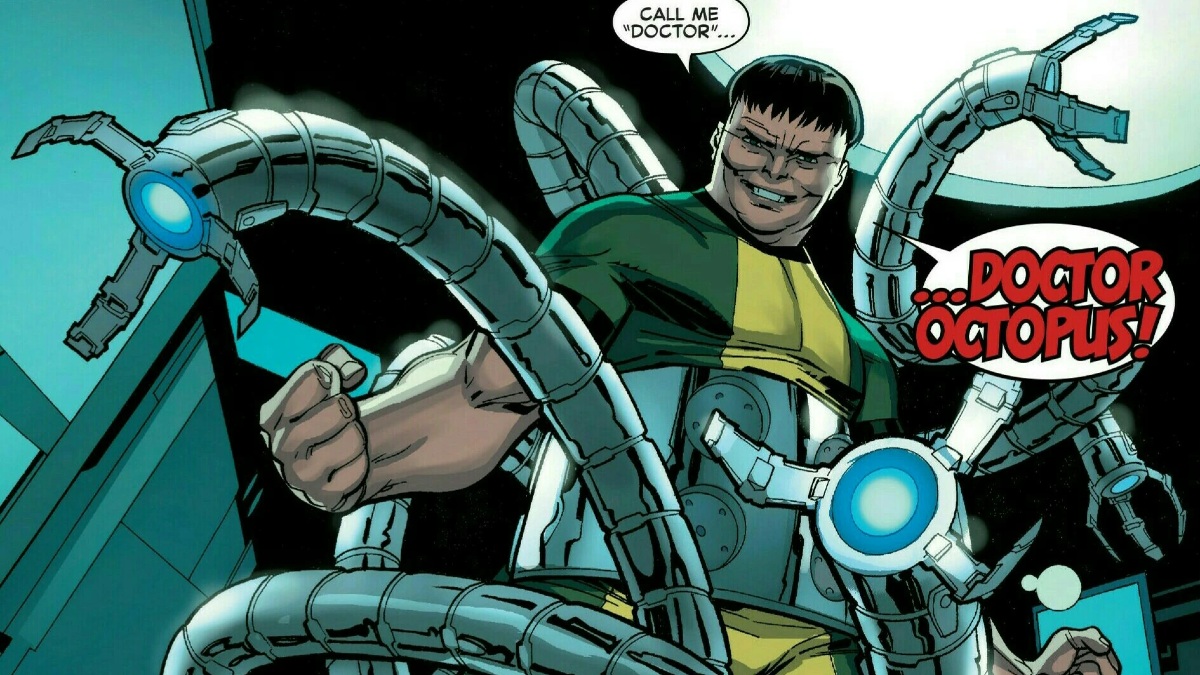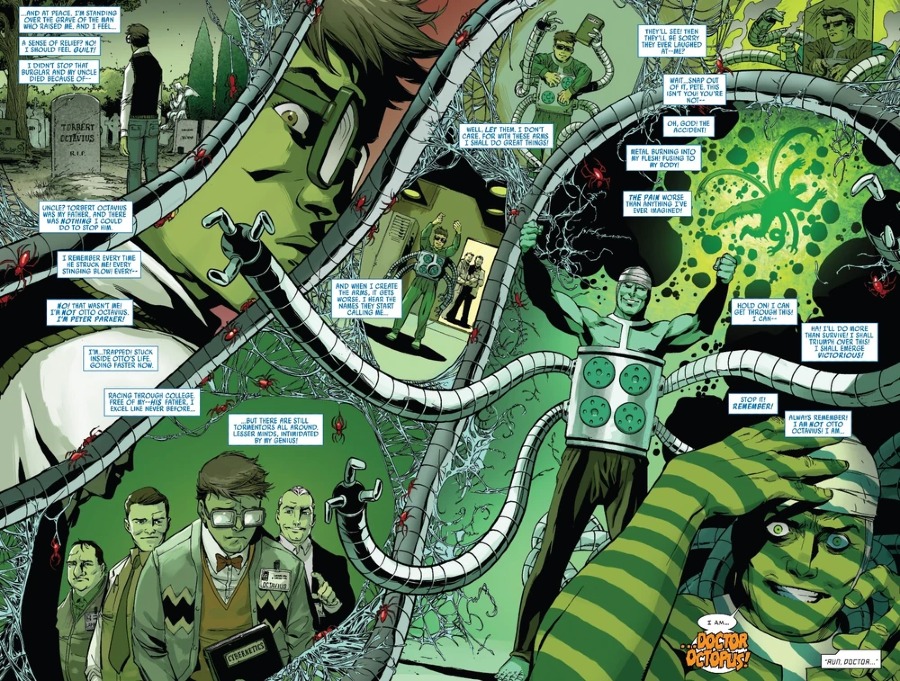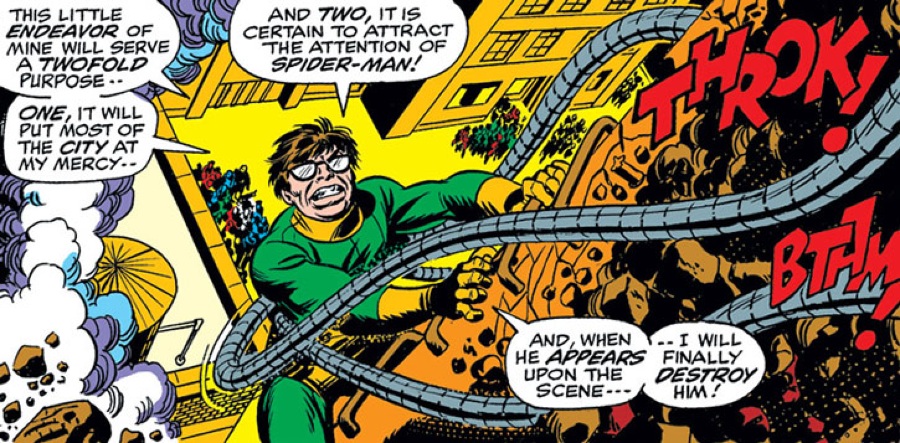How Many Robotic Arms Does Doctor Octopus Have?

Join the community on Reddit for the latest Marvel & DC news!
Doctor Otto Octavius, later infamously known as Doctor Octopus, was a brilliant scientist who suffered a major lab accident involving huge amounts of radioactive materials. He created robotic arms that are worn with a chest harness to be able to work with radioactive materials from a safe distance. Little did he know, those arms – or tentacles – would become a permanent part of him. So, how many robotic arms does Doctor Octopus have? What are they made of? Do they control Doc Ock to become evil? It’s time for all the answers you may need.
Doctor Octopus’s brief character history
Doctor Otto Octavius wasn’t always known as Doctor Octopus – a series of misfortune circumstances and an overbearing lust for power made him Doc Ock. Otto grew up in a dysfunctional home, finding comfort in science and striving to enhance organic life to superior levels through various augmentations.
Otto experimented with radioactive substances a lot, so he developed a set of four expandable metallic tentacles with three-piece pinchers on top that were attached to a harness worn on one’s torso.
The user could manipulate the tentacles as sort of their own bodily extensions, allowing Octavius to touch and handle radioactive materials from a safe distance but with the same dexterity he would have if the materials could be handled from up close.
One day, a terrible accident happened to Octavius in the lab when highly radioactive liquids exploded and caused massive radiation to hit the scientist at once. The stainless-steel harness around Otto’s body burned into his flesh and somewhat fused with his body.

It somehow gave Doctor Octopus the power to control each of the tentacles with his mind, forming a psionic bond that essentially made the four mechanical arms a regular part of his body.
However, the overwhelming pain Octavius endured during the process simply broke Otto’s mind, making him become extremely violent and power-hungry. He embraced the moniker Doctor Octopus for good and became one of Spider-Man’s most popular enemies.
How many robotic arms does Doc Ock have?
After the accident, Doc Ock permanently had four additional robotic arms, or tentacles, if you will, making him worthy of his Doctor Octopus moniker for good. Interestingly, the psionic bond between Doctor Octopus and his tentacle arms is so powerful that he can move the arms even when they are detached from his body and miles away.
Now, there’s a bit of a difference in both the origin and function of the tentacles in the comics and ‘Spider-Man 2,’ so let’s dig into what the arms are and how they work.
What are the arms of Doctor Octopus made of?
Doctor Octopus’s mechanical arms have three key parts. The first is a stainless-steel body harness that goes around Doc Ock’s body, from his lower chest to his waistline. From the harness derives the second part – the tentacles.
All four tentacles are made out of a light titanium-steel alloy, telescoping from being approximately six feet long when fully retracted up to about 24 feet long when fully extended and about five inches (13 cm) wide in diameter.
The tentacles are divided into segments, each powered with highly efficient electric motors and frictionless gimbals, allowing the tentacles to have maximum flexibility while not sacrificing strength in return.
On top of each tentacle are powerful four-piece pincers that can grab objects precisely and rotate 360 degrees in a screwdriver-type motion. The alloy from which the tentacles were made is highly durable yet light. The entire mechanical construct is powered by a nuclear generator that runs on a U-239 core. It takes up to five years of non-stop work for the nuclear core to need replacement.
The mechanical arms give Doctor Octopus a fair level of superhuman abilities. Each tentacle can lift up to 8 tons, provided that Ock Ock uses at least one tentacle as counter-support. Meaning he can lift about 24 tons when using three tentacles.
The strong gripping power of the pincers, combined with the strength of each separate tentacle, allow Otto to scale buildings, brick walls, and even steel surfaces, providing that the rigidity of the material he’s trying to grip is lower than that of his tentacles and pincers.

He can even use the tentacles to move at slightly superhuman speeds. Walking on all four tentacles allows Doc Ock to reach speeds up to 50 mph (80 kmh).
The greatest thing about the mechanical arms is that, although they are designed using science, the accident that happened in Octavius’ lab gave the arms slightly supernatural abilities in terms of their control.
You see, Doctor Octopus is mentally psionically linked to his tentacles, giving him full control of them as if they were normal, natural parts of his body. Moreover, if a tentacle gets detached from Doc Ock’s body, he can still control it mentally from a distance of up to several miles.
Do Doc Ock’s mechanical arms control him?
This is where we get the biggest divergence between the comic book Doc Ock and Alfred Molina’s Otto Octavius from Sam Raimi’s ‘Spider-Man 2.’ In the movies, there’s this inhibitor chip that allows Doc Ock to have full control over the tentacles.
However, when the chip gets fried, it appears as though the tentacles took over and started controlling Otto instead. There are theories that the chip was only a placebo, as Peter Parker manages to convince Octavius to take control at the end of the movie even though the chip was destroyed, but we’re not getting into that right now.

The fact is, when the chip was destroyed, the mechanical tentacles started controlling Doctor Octopus, making him a brutal, all-out villain. It was an attempt – and a successful one – to make Doc Ock more relatable and give him redeeming qualities.
Those qualities are non-existent in the comics. There’s no chip that gives Otto control over the tentacles – he is 100% in control all the time. Each tentacle is semi-sentient and understands commands, but they never ‘defy’ Otto’s commands or make him do something he doesn’t want to do.
The thing that made Doc Ock such an evil criminal megalomaniac wasn’t the tentacles controlling him – it was the unfixable mental damage he had suffered during the accident due to unfathomable pain caused by the radioactive materials basically exploding into him.
Have something to add? Let us know in the comments below!
Liked this article? Join the community on Reddit for the latest Marvel & DC news!

